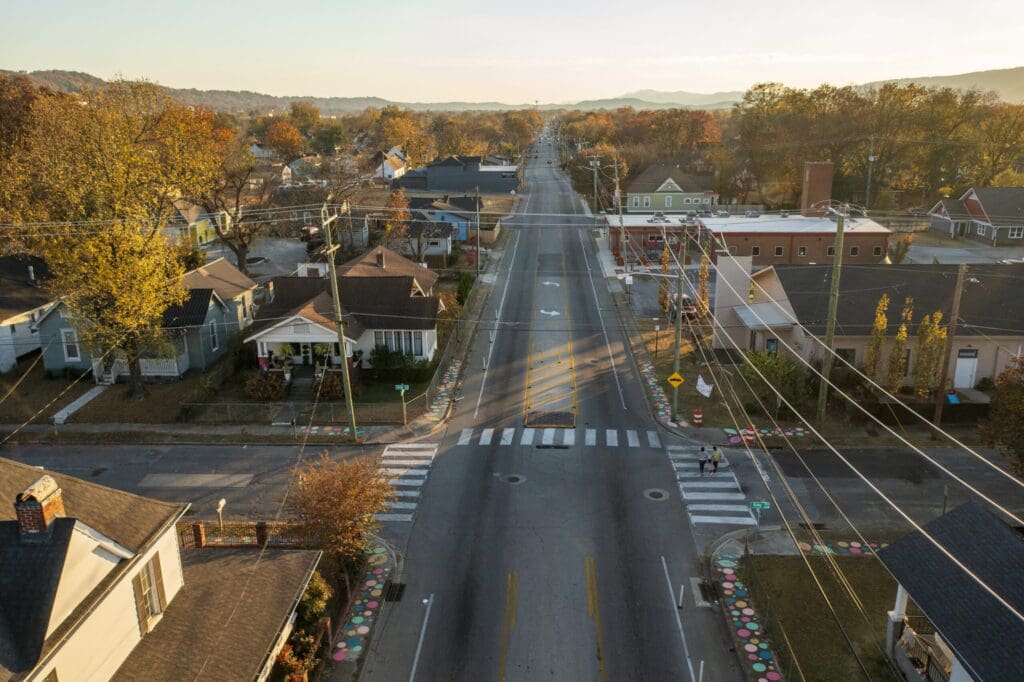
By Ben Crowther
In this webinar wrap-up, we’ll delve into two of the most impactful programs for funding active transportation — the Safe Streets and Roads for All (SS4A) Program and the Transportation Alternatives Program (TAP) — along with other noteworthy funding avenues and tips for the application processes.
The biggest takeaway — Safe Streets for All planning grants have substantial money available, and demonstration projects count as planning! Panelists Marisa Jones of the Safe Routes Partnership, Heidi Simon of Smart Growth America, and Caron Whitaker of the League of American Bicyclists shared their insights into what your community needs to know to navigate funding opportunities.
Safe Streets and Roads for All Program: Bridging Gaps and Fostering Safety
The Safe Streets and Roads for All Program stands as one of the premier federal programs for local, tribal, and metropolitan areas seeking to improve their active transportation infrastructure and make existing streets safer. The program provides $1 billion a year through 2026 in planning and implementation grants. It is administered by the U.S. Department of Transportation, which is currently soliciting applications, with two planning grant deadlines on April 4 and August 29 and a sole implementation grant deadline on May 16.
The program’s planning grants are used to develop a safety action plan and enhance existing plans to prioritize safety impact and equitable investment in underserved communities.They also support quick-build demonstration projects, which allow communities to quickly test out future permanent infrastructure changes. As implied above, nearly every eligible community that applied last year for planning grants received funding.
The program’s implementation grants are intended to build the infrastructure outlined in safety action plans and similar documents. To be eligible for these grants, a community must have an eligible safety action plan in place. Applicants can submit their existing plans for review to determine if they are eligible (deadline: April 17).
The U.S. Department of Transportation has simplified the application so that it is a single page narrative for planning and demonstration projects, or three pages for projects requesting over $1 million. For additional resources, visit the Safe Streets and Roads for All webpage.
Transportation Alternatives Program (TAP): Building Active Transportation Projects
The Transportation Alternatives Program allocates over $1.5 billion annually for walking, bicycling, and safe routes to school projects. It is available to communities of all sizes, including small rural communities, small towns, midsize cities, and major metropolitan areas. Eligible applicants include local governments, tribal governments, transit agencies, and non-profit organizations.
Unlike many other federal transportation programs, TAP funds are allocated through competitions at the state level, which makes for a smaller pool of applicants. In addition, nearly 60% of TAP funding is channeled into separate competitions based on community size, to ensure every place is able to build safe walking and biking infrastructure. Safe Routes Partnership and the League of America Bicyclists have created Transportation Alternatives Fact Sheets for each state, with key contact information and dates for each state’s competition.
Want some examples of what’s been built with TAP funding? See what’s been possible in Durango, CO, Corvallis, MT, and Chicago, IL. Each state runs their TAP program a little differently, so take the time to figure out what makes an application in your state competitive.
Tips and Tricks for Successful Applications
For SS4A and TAP applications (and beyond), there are many ways to position your community for success. Building a strong, broad coalition of support is key. This includes not only municipal and institutional stakeholders, but also support from community members and community organizations. Projects need to also demonstrate impact and ideally are positioned as part of a larger effort to improve access to active transportation infrastructure. The strongest applications will address multiple objectives in the program’s criteria and will have clear goals with measurable outcomes.
Write for people who have never been to your community and have no idea what your project is.
During this process, you’re immersed in your project, but odds are your reviewers will know little to nothing about it. Explain clearly and concisely the problems your community faces and how the project addresses them. Your application should tell reviewers everything they need to know, without having them consult outside sources or rely on their existing knowledge. Pictures and maps are particularly effective ways to communicate to an audience that is probably unfamiliar with your area.
Making the case locally for funding active transportation
What if you’re a community leader and not necessarily eligible to apply directly to these programs? What is your role?
Broad community support is typically needed to get buy-in for an application from agencies and elected officials. You as a community leader can work to bring agencies and elected officials on board. A combination of community support plus either agency or elected official support is often the prerequisite to action. Show them how dangerous streets directly affect the lives of their constituents, demonstrate that there’s broad support for change, and draw on successful examples from other places that address the issue.
Check out the full recording of the webinar: